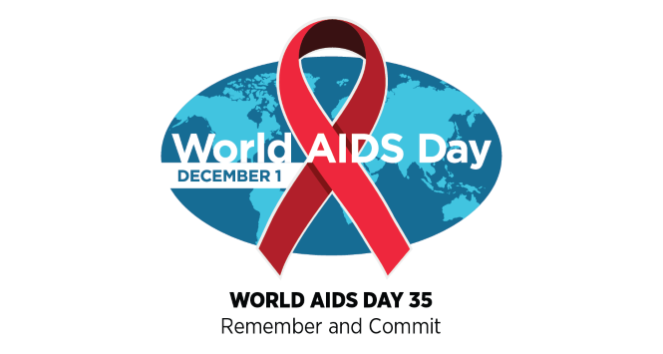
December 1, 2023
Every year on December 1st, we recognize World AIDS Day to commemorate the lives lost to AIDS as well as note the progress that has been made. For instance, medicines are now available that help 1.) prevent transmission of human immunodeficiency virus (HIV) and 2.) manage living with HIV, the virus that can develop into acquired immunodeficiency syndrome (AIDS).
2023 marks 35 years since the first World AIDS Day. The national theme this year is “World AIDS Day 35: Remember and Commit,” calling for us to think about the past and dedicate ourselves to the future.
There is much work left to do and we can all play a part. Community organizations, researchers, policymakers and even teens like you and me can help, by continuing to talk about the prevention and treatment of HIV. We need to make sure this public health issue remains a top priority.
Below are some updates and important info about where things stand today.
HIV/AIDS Today
It’s been over 40 years since the Centers for Disease Control and Prevention reported the first five cases of what became known as AIDS. By the end of 2022, approximately 39 million people worldwide were living with HIV, according to the World Health Organization.
This shows the significance of having a global commitment to stopping new HIV infections and ensuring that everyone with HIV, regardless of ability to pay or where they live, has access to adequate treatment.
Testing and Treatment
About 86 percent of people with HIV worldwide have been tested and know their HIV status. Testing is an essential step to accessing the available medical treatments that help those with HIV stay healthy.
While there is no cure for HIV, there is medication called antiretroviral therapy (ART) which lowers the chances for people living with HIV of developing complications. ART can also reduce the amount of virus in the blood (also called viral load) to the point where it is undetectable. Undetectable means a person’s viral load is so low that the virus cannot be passed on to someone else. This is known as undetectable = untransmittable (U = U).
Prevention
Pre-exposure prophylaxis, or PrEP, is a medicine people at risk for HIV can take to prevent getting HIV from sex or drug use (via injection). PrEP is for people who are HIV-negative and is highly effective at preventing HIV when taken as directed.
Post-exposure prophylaxis, or PEP, can be used if someone has been exposed to HIV. It is for emergency use and must be taken within 72 hours (three days) of exposure.
For a directory of how to find resources like testing, PrEP and PEP, check out this link.
More People Need Access
Clearly there have been significant advances already made by scientists and researchers to help treat people living with HIV and reduce the spread of the virus. But even with all the progress, not every person has insurance coverage, can afford to pay for medication or can access things like testing and care. Resources to help people afford medication, clinic visits and testing need to receive continued funding.
Unfortunately, many people around the world do not have access to resources.
You Can Lead
To make a world without HIV/AIDS a reality, continue this important discussion on World AIDS Day and throughout the year. Continued stigma around HIV/AIDS often causes barriers to open communication, whether between family members, patient and health care provider or partners in intimate relationships.
The 35 Remember and Commit campaign encourages each one of us to make a difference. And you can check out global information here, to see what communities around the world are doing to help those in need.
Educate yourself on how HIV is transmitted and encourage the discussion of safer sex in your friend groups and intimate relationships.
Honor those who have died from AIDS by wearing a red ribbon and supporting any local events for World AIDS Day.
Share information about global and community events, videos or social media that will help to educate and commemorate the important HIV/AIDS Awareness movement.
Together, we can keep making progress.
